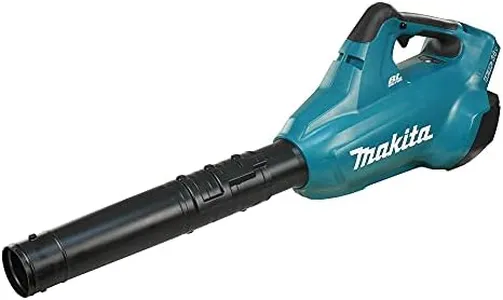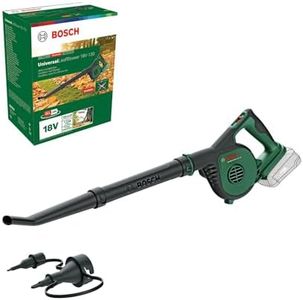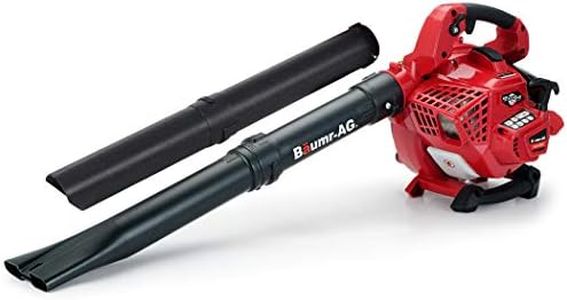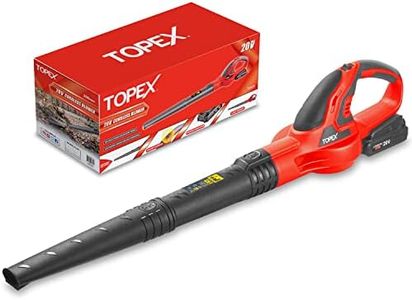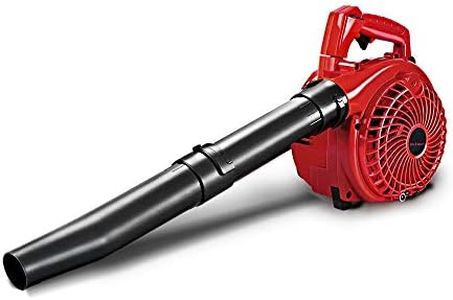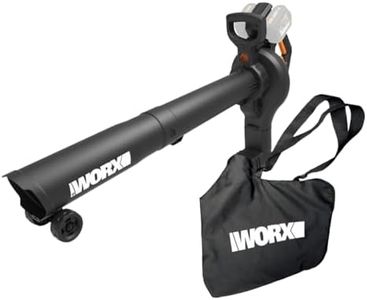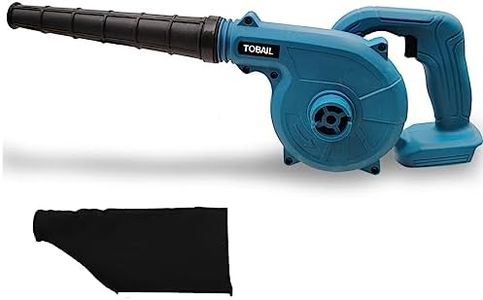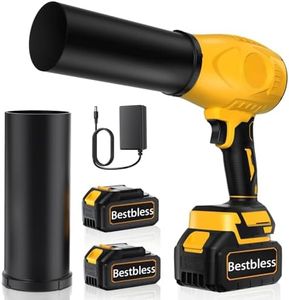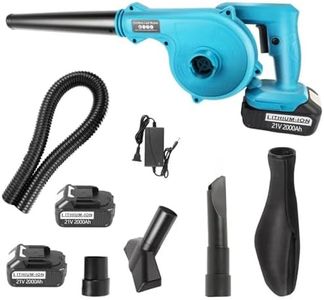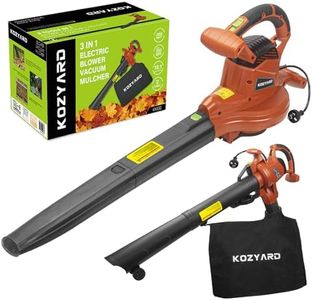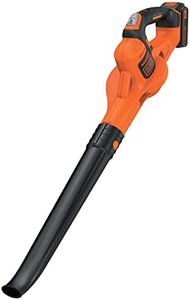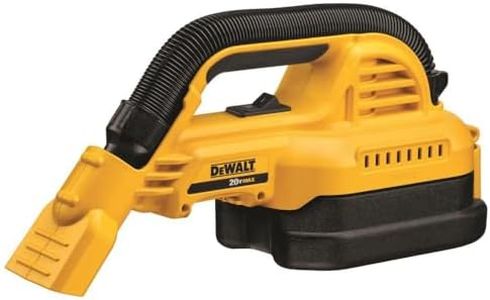We Use CookiesWe use cookies to enhance the security, performance,
functionality and for analytical and promotional activities. By continuing to browse this site you
are agreeing to our privacy policy
10 Best Cordless Leaf Vacuums
From leading brands and best sellers available on the web.Buying Guide for the Best Cordless Leaf Vacuums
Choosing the right cordless leaf vacuum can make your yard work much more convenient and enjoyable. Since these tools are battery powered, they offer portability and freedom from cords, which is great for moving easily around your property. However, with the wide variety of models and features available, picking the best fit for your needs comes down to understanding a few key specifications and how they align with your yard's size, the types of debris you'll handle, and how long you typically work before needing to recharge.Battery VoltageBattery voltage measures the power output of the vacuum's battery. Higher voltage generally means the tool will be more powerful and better able to suck up or blow away heavier leaves and debris. Leaf vacuums typically come in ranges from lower voltages (around 18-24V) to high voltages (40V and above). If you have a small yard with mostly dry, lightweight leaves, a lower voltage model might be enough. For larger spaces or heavier, wet leaves, higher voltage is useful as it provides more consistent suction and runtime.
Battery Capacity (Ah)Battery capacity, measured in ampere-hours (Ah), tells you how long the vacuum can run before needing a recharge. Lower capacity batteries (under 2.5Ah) will provide 10-20 minutes of use, good for quick clean-ups. Medium capacity (2.5-5Ah) suits moderate jobs, while high capacities (over 5Ah) are needed for larger areas and longer tasks. Consider how long you want to work without stopping and the size of your area to find the right battery for you.
Air Speed (CFM and MPH)Air speed is usually described by two terms: cubic feet per minute (CFM) and miles per hour (MPH). CFM indicates how much air the blower/vacuum can move, while MPH is a measure of how fast the air is coming out. Higher numbers for each mean more effective performance, especially with wet leaves or debris. For light yard clean-up, lower ratings (e.g., 100-200 CFM and 100-120 MPH) might suffice, but for tough, large tasks, look for models with higher numbers.
WeightWeight is a key factor since you'll be carrying the vacuum around, sometimes for extended periods. Lighter models (under 7 lbs) are easier to maneuver and are a good choice for users who may not want to lift heavy tools for long, while slightly heavier models may offer more power or larger batteries. If possible, think about how much weight feels comfortable to handle over the time you typically spend working in your yard.
Bag CapacityBag capacity refers to how much debris the vacuum can hold before you need to empty it. Smaller bags (under 1 gallon) fill up quickly and require more frequent emptying, while larger bags (up to 2 gallons or more) allow you to work longer stretches without stopping. For small yards, a small-to-medium bag may be fine, but if you have a lot of leaves or a larger property, a bigger bag will save you time.
Mulching RatioThe mulching ratio indicates how effectively the tool will shred and compress leaves and debris, often measured as something like 10:1 or 16:1 (meaning 10 or 16 bags of loose leaves become 1 bag after mulching). A higher ratio means more efficient mulching, which is ideal if you want to minimize the volume of waste or use the mulch as compost in your garden. Choose a higher mulching ratio if leaf volume is a challenge for you.
Mode Switching (Vacuum/Blower)Many cordless leaf vacuums can switch between vacuum and blower functions. The ease and speed of switching can be important, especially if you want to tackle different jobs during one session. Some models use a single lever or button, while others might require swapping attachments. If you like to alternate between blowing and vacuuming, prefer models with fast, simple switching.

